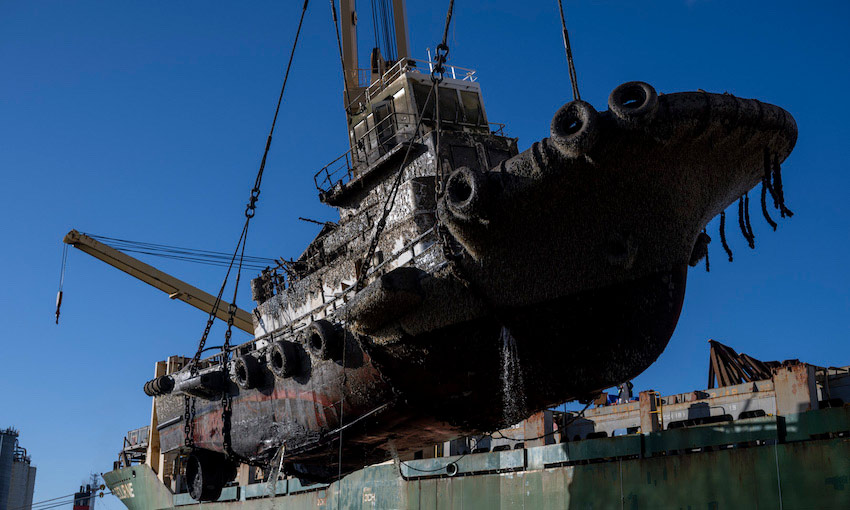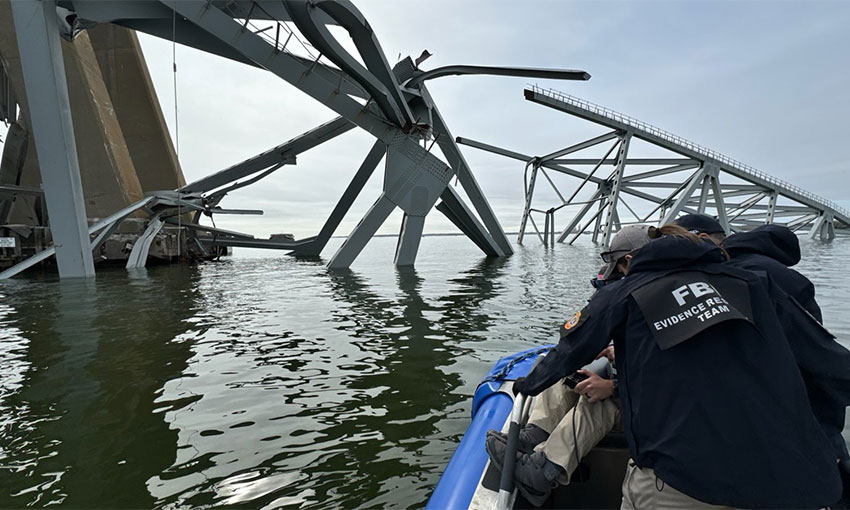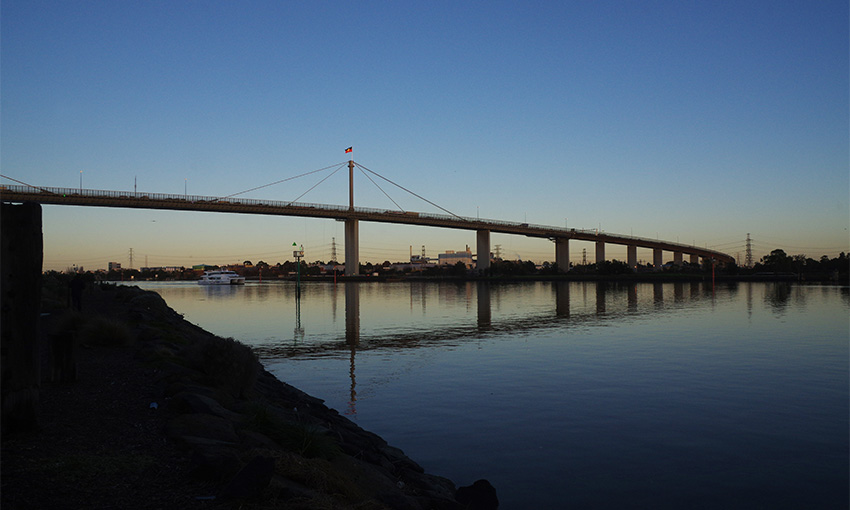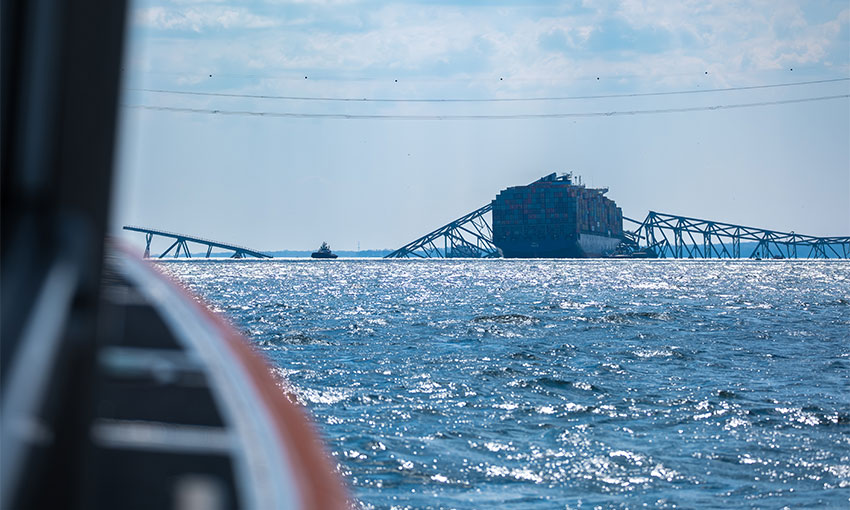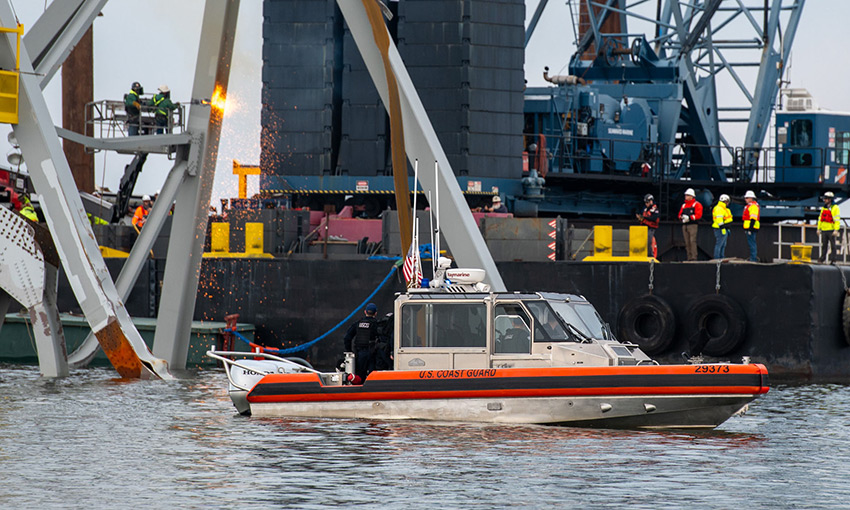WRECKED tugboat York Cove, which has been at the bottom of Devonport’s Mersey River since late January, has been removed by heavy lift ship AAL Melbourne.
York Cove is the first of two sunken tugs to be pulled from the river. York Cove and Campbell Cove sunk when cement carrier Goliath allided with them in Port of Devonport.
AAL Melbourne was engaged by TasPorts and United Salvage after severe weather down the east coast prevented lifting barge St Vincent from making the journey from Brisbane to Tasmania.
AAL Melbourne travelled from Burnie on Saturday night and anchored off Devonport before heading to its berth at 0400 on Sunday morning to perform the lift.
AAL Shipping Australia general manager Frank Mueller told DCN this is the first time AAL has been involved in a major salvage operation in Australia. The company has been servicing the Australian breakbulk and heavy lift market for more than 25 years.
“Though this is essentially a heavy lift for us, it was a very interesting project, with its own quirks and set of challenges,” Mr Mueller said.
“Devonport is a lifeline for Tasmania with ferries bringing in people several times a day. It is also an extremely busy cargo port, handling three million to four million tonnes of freight annually.
“Therefore, we had to work around traffic, weather and tides to ensure the operation ran as smoothly as our engineering department planned it, in consultation with United Salvage and all other stakeholders. The operation is still ongoing, but progressing very well.”
Mr Mueller said the operation demonstrates the important role heavy lift vessels can play not only in transporting valuable cargo, but also in helping keep Australia’s shipping lanes clear and open.
“This operation would not have been possible with either a container or ro-ro vessel, which is ironic as in this period of extended port and terminal congestion across Australia, those vessels are being prioritised over MPV and general cargo vessels for port entry slots and our resulting waiting times are severe and imbalanced.”
TasPorts chief operating officer Stephen Casey said TasPorts, its insurer and United Salvage had been working diligently on the salvage effort.
“The lift of the first tug was a slow process, but it needed to be,” Mr Casey said.
“It is made complex by a series of environmental factors, including weather, wind and river currents that have been affected by recent rain, and the condition of the wrecks themselves in the water.”
Mr Casey said the initial allision resulted in an estimated 60,000 litres of fuel being spilled into the river, meaning around 10,000 litres was unaccounted for across both tugs.
He said York Cove weighs 310 tonnes, but the months on the river floor will have impacted the weight of the load.
“The two cranes used to lift the tug provides a lifting capacity of 500 tonnes, but the water, marine growth and fuel left in the vessel means the exact weight is unknown until we start lifting.
“Further, as the weight of the tug comes under tension, the lifting ship needs to remain upright, so it is constantly pumping its ballast tanks.”
It is understood a decision on the commencement of salvage works for Campbell Cove was made at the end of the day’s work.
“We have a positive weather window until Wednesday to complete the second lift,” he said.
“In planning and executing the second lift, just as was the case with the first lift, TasPorts, the salvage company and the operators of the AAL Melbourne will be working to manage the safety of TasPorts staff and all contractors on the wharf.
“Ensuring the protection of the environment and the integrity of the oil spill response boom around the wreck site is maintained will also be a key focus.”
Mr Casey said the successful removal operation was an important step forward for TasPorts, which has been focused on returning all commercial berths at Port of Devonport to full operations.

